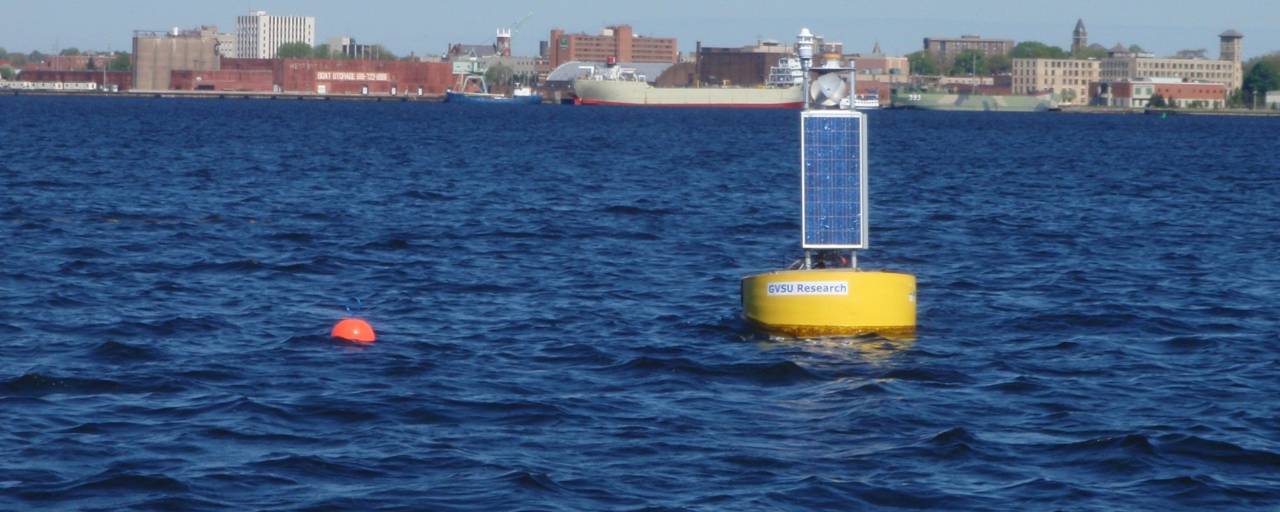Buoy System Diagram and Sensors
The buoy system consist of 3 main components
- Surface Buoy (2500# buoyancy; A 5 ft diameter) - equipped with the master data logger, battery power, solar panels, and meteorological station.
- Subsurface Sensor String and Buoy (100# buoyancy) - equipped with most of the water sensors that are attached along a cable that extends to the bottom of the lake. This system is tethered to the Surface Buoy to which provides for power and data transmission.
- Bottom-mounted platform - equipped with a sensor that measures the direction and speed of the water.

|
Main Surface Buoy Sensors |
|---|
|

|
Subsurface Buoy Water Sensors |
|---|
|
|
Bottom-mounted Sensors |
|---|
|


